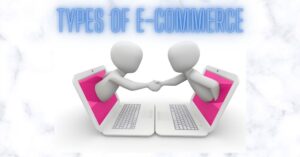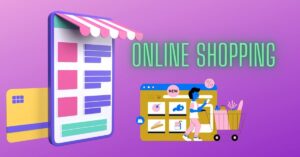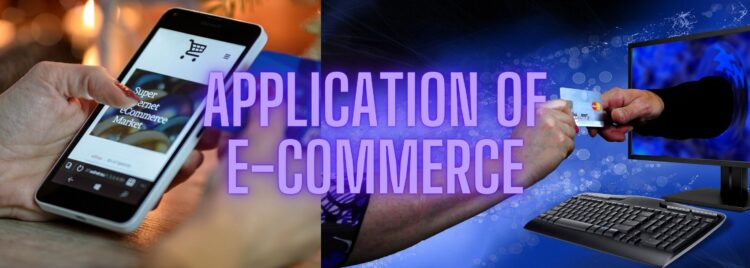Introduction
E-commerce is the present era of product’s sales and services. There are more than 26 million e-commerce sites in the world, with new ones counting-in every single day. In 2021, the Indian e-commerce market was valued at INR 6210.96 Bn, anticipated to reach INR 26,459.18 Bn by 2027. This makes Indian e-commerce to see an annual growth rate of around 26.71% during 2022-2027.
Not only the Indian market in particular but, all over the world, the market has seen an exponential explosion, this is because of the surge in smartphone and internet users, a hype in disposable income and Improved policy reforms. Also, application of e-commerce like use of e-wallets, internet banking and other mobile friendly transactions have made e-commerce platforms popular among its consumers.
The popularity of E-commerce is not just order- at- your- comfort but also benefits received by various offers provided by these e-commerce sites individually. These offers are either coupon-based discounts, easy returning product services, reading actual reviews with details of the product and a quick process to check out.
What is the Application of e-Commerce
E-commerce or Electronic commerce refers to all the commercial transactions done through an electronic medium. However, e-commerce is a term commonly used as a reference to be selling of products and services to consumers or businesses over the internet. E-commerce can also be interpreted as sharing of information related to business, Business transactions through telecommunication networks and maintaining the business relationship.
E-commerce can be classified by application into following:
Electronic Markets

This market basically is the presentation of a range of services or products already available in the market, so that the consumers can compare the prices and make their purchases accordingly.
Electronic Data Interchange
This involves a standardized system communication between computers without any invoices therefore, eliminating any error or delays in the process.
Internet Commerce
This is the most common medium used to advertise, list and sell products and services to the consumer and then is shipped to the buyer.
Types of E-commerce

E-commerce is typically used in various other business fields; The major categories are as under:
Business to Business (B2B)
B2B represents electronic exchange of Information between two or more businesses, for services and products. It is commerce with other businesses i.e., one business selling products or services to other businesses rather than selling it to the end consumer directly. Alibaba, eWorldTrade, Woodpecker and others are such examples of B2B companies. However, handling this kind of data requires software created by high-end web development companies.
Business to Consumer (B2C)
When a transaction takes place between a company and end consumer it is described as Business-to-Consumer e-commerce. In this the company sets up an online store or a website and allows customers to make purchases of its product. They are called online retailers of products and services. Amazon is an example of a B2C model.
Consumer to Consumer (C2C)
C2C represents transactions between consumers. Consumer-to-Consumer business model made the purchase, exchange and selling easier for people. eBay is an online auction site for consumers, AliExpress, Etsy and Craigslist are a few examples of C2C business models. The primary goal of a C2C model is to facilitate transaction
Consumer to Business (C2B)
C2B represents a transaction between consumer and other businesses. The transaction is carried out through a website where products or services are bought by customers and businesses they bid and buy. Employment boards and stock are among few examples.
Business to Administration (B2A)
This Business model enables payment transaction through online medium between companies and government or administration bodies. Government authorities directly or indirectly depend upon e-services such as, security, e-documents and registers.
Consumer to Administration (C2A)
Transactions between customers and government or public administration authorities. Here, unlike administration, Consumers use e-commerce methods to purchase products and services of various industries such as educational, retail industries and health.
The Increase in the proliferation of e-commerce today has led to a significant increase in e-commerce development services.
Most Common Application of e-Commerce
The Application of e-Commerce basically leads to two perceptions: one where software applications, either mobile (m-commerce applications) or web applications like eBay, Amazon etc. come into picture. Here, mobile applications are an extension to e-commerce and are the driving force behind businesses applications successfully running services, be it Food Delivery app like Zomato or Taxi app like Uber.
The second one refers to marketing with the help of e-commerce mediums, such as Wholesale or Retail, e-Banking, Auctioning, online booking and so on. Following is the detail explanation of the above stated perceptions:
Retail and Wholesale Application of e-Commerce
Online retailing or E-retailing refers to the use of online stores by businesses for transaction of services and products to the consumers. This is achieved by means of e-catalogs displayed to the customers through these online stores and virtual shopping carts. There are numerous applications of e-commerce in this area.
Finance Application of e-Commerce
Finance and e-commerce have come together for operations in stock markets and the banking sector. Online stock markets enable electronic trading for people by informing them about the performance of the stocks through analysis, charts, reports and other parameters through websites.
Manufacturing Application of e-Commerce
E-commerce helps the manufacturing companies to execute electronic exchange for sharing market status, Combined buying and selling, inventory check information and so on. This enables the manufacturing groups to carry out their operations fluidly.
Auctioning Application of e-Commerce
Applying e-commerce into auctions helps people to participate irrespective of the geographical boundaries. This helps to receive more and more participation, better negotiation that makes auction successful.
Marketing Application of e-Commerce
Activities related to marketing such as product features, building customer relationships, pricing all of these can be strengthened by using e-commerce to enhance and provide customized shopping experience to the customers. However, Digital Marketing Strategies significantly helps in promoting businesses.
Online Shopping Application of e-Commerce 
There has been a massive change in people’s shopping preferences in the last few years. The mantra for the businesses to succeed these days is “Go Online”. However, shopping online is comfortable, more convenient and most of the time cost effective. There are few prosperous online shopping apps such as Amazon, Flipkart etc.
Mobile and Web Application of e-Commerce

A subset of retail commerce platform, mobile commerce or popularly called as m-commerce applications. Web applications on mobile have become staple for brands to show their product and service capabilities. The customer makes purchases through web applications optimized for the use of retailer. These applications of e-commerce also provide payment security and ensure safe e-payments.
Online Booking Application of e-Commerce
Tourism is a booming industry today and travel through online booking is growing the e-commerce presence in the industry. Online booking gives the privilege to the people to make their bookings in advance whether it is for flight tickets, train tickets, Resorts, hotels, transportation services or other tourism packages. It makes trips safe and convenient with all the bookings at the tip of your fingers.
Online Publishing Application of e-commerce
Traditional printed books and magazines are now replaced by e-books and Digital Magazines. The advantages such as lightweight, accessibility and portability from anywhere and anytime have taken over the traditional ways. Electronic mode of e-books is also environment friendly as they help in saving trees and help reduce the use of papers. Due to the above reasons the e-publishing and online publishing has seen a rise in popularity.
E-banking Application of e-Commerce
Internet banking has simplified the complex, time consuming banking process for the consumers. The e-banking is that sector of e-commerce application that helps the users to perform money-based transactions easily without waiting in long queues. Today, every bank has its own application to provide the best of the services through virtual banking.
Anatomy of Applications e-Commerce
How does the application of e-commerce work? What are all the elements constituting an e-commerce app? Following is the detailed anatomy of Application of e-commerce.
Multimedia Content
The life of an Application of e-Commerce is defined by the multimedia content, making them innovative and unique. The use of content in different formats like, animations, video, audio, images, text, GIFs etc. The basic idea behind using the multimedia content is to increase the user’s interactivity by making new digital content and keep the viewers connected as human communication.
Multimedia Storage Servers
The lifeline of all e-commerce applications are the powerful servers as they aid the distribution and storage of digital content to the users. These servers must provide complete reliability and security, must be supporting a large-scale distribution and should have the capability to store large and diverse content. Few models of Multimedia Storage Servers are as follows:
Client-Server Architecture
The Client-Server Model is an architecture followed by all e-commerce applications that implements a standard message passing to execute all the interactions between the client and the server in a “request-reply” format. The server handles the storage, security, tasks and scalability.
Internal Processors of Multimedia Servers
The Input of multimedia servers is raw data and the output produced is legible information. The most crucial data manipulation for e-commerce applications deals with the storage of internal processes. It requires enormous systems and cutting-edge symmetric multiprocessors to handle a huge number of users and to manage their execution.
Video Servers and e-commerce
The most integral feature of applications are On-demand videos. These include videoconferencing, shopping kiosks, corporate multimedia servers, telecommunication etc. however, these video servers should have the capability to deliver the information to an enormous number of users simultaneously.
Information Transport
The primary transport providers in e-commerce applications are cables, wireless services and telecommunications. Telecommunication companies manage long-distance, local and telephone lines. Whereas, optical fiber, computer-based services, satellite lines and coaxial are managed by cable operators to handle the internet related services.
Consumer access devices
The devices used by the customers is directly proportional to the way users access the application. These access devices can be personal computers, videophones, consumer electronics like, game boxes and television, digital assistants like, pen-based computing, voice driven etc.
Why applications of e-commerce are required for your business
With an increase in the online presence of the world’s population every second, a switch of your business to trending e-commerce applications is more of a need than a want in today’s world. Following are the points on why we need an e-commerce switch:
- It lets you increase your reach to a vast number of users instantly, especially those using mobile as their medium
- It takes your business to new unseen heights
- Gives users a secured mobile experience along with Appstore authority
- It gives you a wider reach and visibility to an audience anywhere in this world
- Reduces the cost of the physical shop by these readymade digital shops proving to be economical
- Without beginning from the scratch, a seamless real store experience
However, an e-commerce app that is well-fit will give a cutting-edge to the competitors. It provides following:
Mobility
The thing about a physical store is that you cannot take it from one place to another place, but you can always refer to an application over your mobile sitting anywhere in the world. That is the amount of power a mobile hold. Whether your store is big or small or it’s just a home-based business, a mobile app gives an infinite mobility to your physical store to numerous places through mobile.
One-to-One Marketing
With a challenge to address every person in town and people beyond borders personally, the physical store saw very narrow growth in the cross-border market. The recent advancement in e-commerce application development has made it possible today to target your customers one-to-one. Analytical tools such as big data helps you persuade, win and reward loyal customers.
Faster Payment
One of the crucial integrated features of e-commerce apps is in-app payments. However, m-banking, the digital banking boom is the new way of paying debts. The advantage of an e-commerce app is that it will help the customers to make faster payments and get easy refunds.
Fit to Need
How often do you give a new look to your store? Maybe in a year or 5 years. Imagine doing this every week or every day. This is possible only digitally, who doesn’t like a new look? And the feedback received can turn into action to showcase how responsive you are to your customers. This is a right place to build brand loyalty and know your customer to develop a better relation.
How application of e-commerce helps you to grow your business

Combining all the fragments discussed in detail and taking the basic tenets of prudent marketing into consideration i.e. the 4Ps (Product, Price, Promotion and Place). These are the matrix of marketing, and a company should ace it to run a successful business.
Inform to Impress
A product looks fascinating when the product is
listed in a certain way. The information displayed about the product and when the user feels like he is reading valuable information about the product. This also works as the marketing’s first P- Product, informing the customers about the specialties and features of the product.
Cut your Cost
When it comes to remodeling a brick-and-mortar system of a store it is quite lofty and expensive. However, the application of e-commerce can cut your cost and strengthen your business. The mobile application lets you remodel and modify your online store in just a matter of seconds. Apart from application of e-commerce saves on rent, staffing, advertising, maintenance etc. This gives justification to the marketing’s second P-Price.
Customer Satisfaction
Customers love extremely attractive offers and targeting your loyal and prospective customers help you build your brand in the market. The application of e-commerce helps you in providing a vast variety of value-added services to your customers. For example, many apps like Flipkart, Amazon, eBay and so on use Halloween, Diwali, Christmas and other festivals or special days like Independence Day etc. to offer freebies.
On the other hand, companies like G-pay conducts its promotion through gaming to promote its payment solution. This brings the third P of marketing into the picture i.e Promotion.
People are Mobile
This consists of the 4th P of marketing strategy i.e Production. The application of e-commerce has made people to find an easy way out. People are now mobile and mobile development trends like scan-on-the-go apps and virtual reality apps are giving e-commerce applications a new height.
Conclusion
Applications of E-commerce in today’s world are vastly preferred for trading goods and services worldwide, people prefer buying articles through the internet medium and assisted technologies. The key driving force behind this revolution is rising preference of mobile commerce, advances in application of e-commerce and app development, social media platforms and other digital modes.
The application of e-commerce forms the crucial part of success of your business by spreading it across nation and national boundaries through a small portable mobile device. The era of the Brick-and-mortar system is far left behind when it comes to providing one to one connection with your potential customers worldwide.
Covering an enormous amount of data from loyal and prospective customers across industries from food deliveries to clothing, electronics, cosmetic products and other services, E-commerce has its bases everywhere.
Frequently Asked Questions
What are the applications of e-commerce?
Applications of e-commerce include online catalogues, file transfer protocols, email, Mobile applications, Shopping carts, Electronic Data Interchange and Web services. These approaches are basically used in B2B and B2C activities and other outreaches.
Which was the first application of e-commerce?
Compumarket was introduced by Sequoia Data Corp. in May 1989. Compumarket was the first ever internet based application of e-commerce model. Buyers and Sellers could search the items posted online and make purchases using a credit card.
What are the advantages of applications of e-commerce?
Mobility
The thing about a physical store is that you cannot take it from one place to another place, but you can always refer to an application over your mobile sitting anywhere in the world. This is the application of e-commerce and the amount of power a mobile hold. Whether your store is big or small or it’s just a home-based business, a mobile app gives an infinite mobility to your physical store to numerous places through mobile.
One-to-One Marketing
With a challenge to address every person in town and people beyond borders personally, the physical store saw very narrow growth in the cross-border market. The recent advancement in the application of e-commerce development has made it possible today to target your customers one-to-one. Analytical tools such as big data helps you persuade, win and reward loyal customers.
Faster Payment
One of the crucial integrated features of e-commerce apps is in-app payments. However, m-banking, the digital banking boom is the new way of paying debts. The advantage of an application of e-commerce is that it will help the customers to make faster payments and get easy refunds.
Fit to Need
How often do you give a new look to your store? Maybe in a year or 5 years. Imagine doing this every week or every day. This is possible only by application of e-commerce, who doesn’t like a new look? And the feedback received can turn into action to showcase how responsive you are to your customers. This is a right place to build brand loyalty and know your customer to develop a better relationship.
Is a example of e-commerce business application?
Application of e-commerce has some major business examples like Flipkart, Myntra, Amazon and eBay. These apps however offer discounts, occasional sales and various other voucher discounts offered by collaborating banks, coupons and through loyalty programs.
What are the most important e-commerce application?
The Application of e-Commerce basically leads to two perceptions: one where software applications, either mobile (m-commerce applications) or web applications like eBay, Amazon etc. come into picture. Here, mobile applications are an extension to e-commerce and are the driving force behind businesses applications successfully running services, be it Food Delivery app like Zomato or Taxi app like Uber. The second one refers to marketing with the help of e-commerce mediums, such as Wholesale or Retail, e-Banking, Auctioning, online booking and so on. Following is the detail explanation of the above stated perceptions:
Retail and Wholesale Application of e-commerce
Online retailing or E-retailing refers to the use of online stores by businesses for transaction of services and products to the consumers. This is achieved by means of e-catalogs displayed to the customers through these online stores and virtual shopping carts. There are numerous applications of e-commerce in this area.
Finance Application of e-commerce
Finance and e-commerce have come together for operations in stock markets and the banking sector. Online stock markets enable electronic trading for people by informing them about the performance of the stocks through analysis, charts, reports and other parameters through websites.
Manufacturing Application of e-commerce
E-commerce helps the manufacturing companies to execute electronic exchange for sharing market status, Combined buying and selling, inventory check information and so on. This enables the manufacturing groups to carry out their operations fluidly.
Auctioning Application of e-commerce
Applying e-commerce into auctions helps people to participate irrespective of the geographical boundaries. This helps to receive more and more participation, better negotiation that makes auction successful.
Marketing Application of e-commerce
Activities related to marketing such as product features, building customer relationships, pricing all of these can be strengthened by using e-commerce to enhance and provide customized shopping experience to the customers. However, Digital Marketing Strategies significantly helps in promoting businesses.
Online Shopping Application of e-commerce
There has been a massive change in people’s shopping preferences in the last few years. The mantra for the businesses to succeed these days is “Go Online”. However, shopping online is comfortable, more convenient and most of the time cost effective. There are few prosperous online shopping apps such as Amazon, Flipkart etc.
Mobile and Web Application of e-commerce
A subset of retail commerce platform, mobile commerce or popularly called as m-commerce applications. Web applications on mobile have become staple for brands to show their product and service capabilities. The customer makes purchases through web applications optimised for the use of retailer.These applications also provide payment security and ensure safe e-payments.
Online Booking Application of e-commerce
Tourism is a booming industry today and travel through online booking is growing the e-commerce presence in the industry. Online booking gives the privilege to the people to make their bookings in advance whether it is for flight tickets, train tickets, Resorts, hotels, transportation services or other tourism packages. It makes trips safe and convenient with all the bookings at the tip of your fingers.
Online Publishing Application of e-commerce
Traditional printed books and magazines are now replaced by e-books and Digital Magazines. The advantages such as lightweight, accessibility and portability from anywhere and anytime have taken over the traditional ways. Electronic mode of e-books is also environment friendly as they help in saving trees and help reduce the use of papers. Due to the above reasons the e-publishing and online publishing has seen a rise in popularity.
E-banking Application of e-commerce
Internet banking has simplified the complex, time consuming banking process for the consumers. The e-banking is that sector of e-commerce application that helps the users to perform money-based transactions easily without waiting in long queues. Today, every bank has its own application to provide the best of the services through virtual banking.














One response to “Application of e-Commerce | All you need to Know | DataTrained”
Wonderful information.